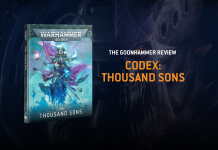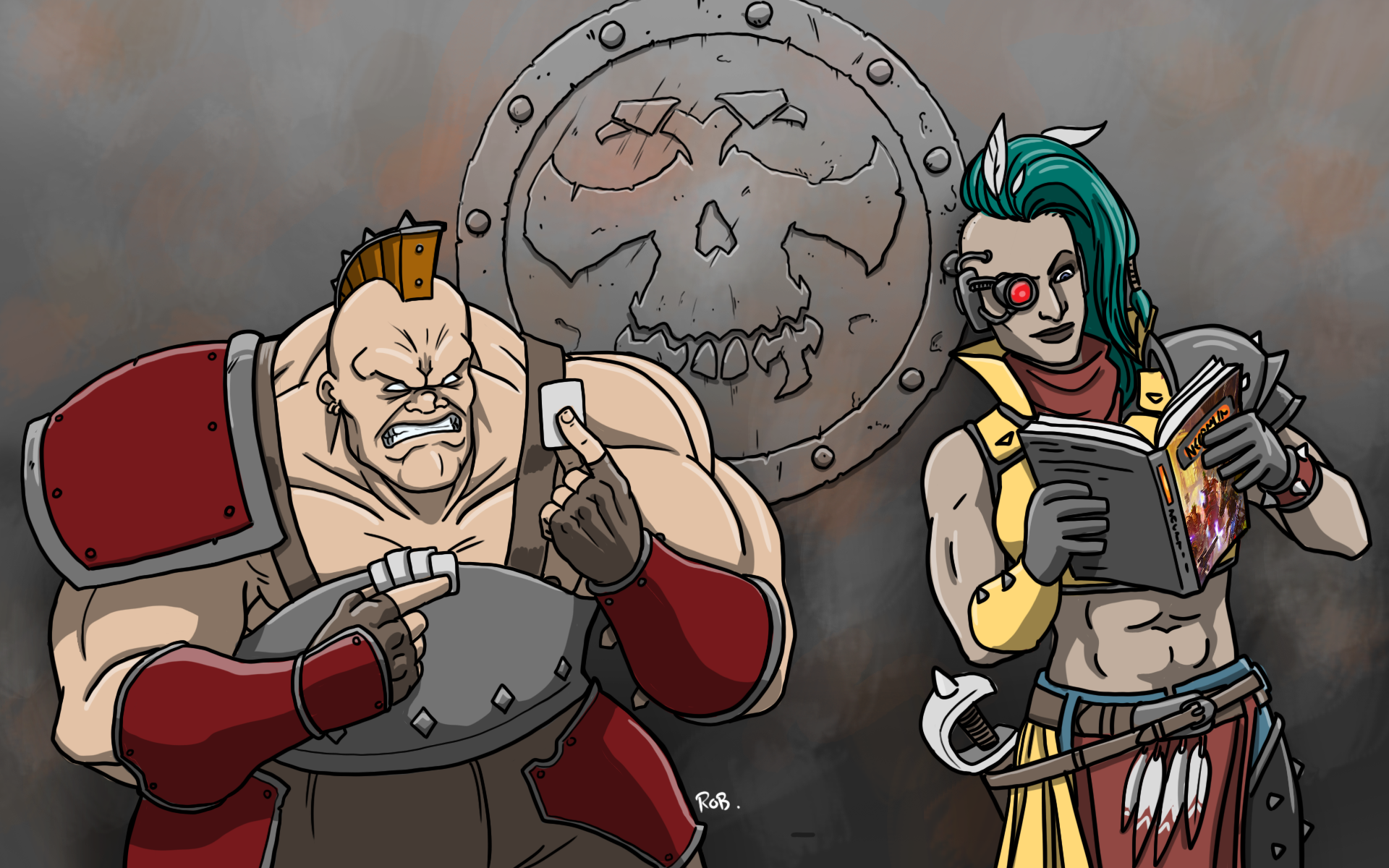In Necromunda, skills are non-ability statistic ways of improving your fighters. They represent the different ways experienced fighters have learned to cope with the dangers of the Underhive. Like most things in Necromunda, some skills are awesome, and some are like a New York Jets fan’s SAT scores: bad. In this foray into Necromunday, we’ll attempt to bring a little bit of order and analysis to the available skills in Necromunda so that you can better prepare yourselves for the challenges the Underhive brings.
Each gang will have a different set of skills to choose from. And within each gang Leaders, Champions, Juves and Specialists (gangers that rolled a 2 or 12 on their upgrade table) can select from prescribed choices. Because the usefulness spread is so dire in skill choice, some gangs have access to extremely good skills, while some gangs (Cawdor) might as well not even consider skills for their non-leader fighters. Skills are also grouped into Primary and Secondary skills.
Skills are gained in two ways in Necromunda: chosen at character creation and bought using experience points. Leaders and champions (or their analogs in non-house gangs) each get to start the campaign with one from their primary skill lists. Generally people tend to buy stat upgrades rather than skills because most stat upgrades are cheaper than picking a skill, and randomly choosing a skill for a fighter is a very bad thing to do, as the usefulness spread is similar to what we wrote about in our tactics cards article.
Stat upgrades cost between 3 XP for +1 willpower and intelligence (which are dump stats 95% of the time) and 12 XP for +1 wound or attack. A random skill from one of the fighter’s primary skills is 6 XP, but that’s not important because random skills are a bad idea. It is 9 XP for a fighter to choose a primary skill and also 9 XP to randomly generate a secondary skill. It’s also 12 XP to randomly generate any skill, but again, don’t randomly generate skills.
Just to reiterate: do not randomly generate skills. The usefulness spread with skills in Necromunda is atrocious, just like everything else. It would be a terrible shame to waste 9 or 12 XP on a skill that you can’t or don’t want to use.

Knowing the cost of skill-ups tells us that the starting skills generated by Leaders and Champs are the most important skills, as most XP purchases will be made to improve a fighter’s stats. Choosing a skill will generally begin to dictate what role a fighter will play, so it’s important that you choose the right skill at character creation. There are, of course, some builds that require two skills to work correctly, but those infrequent builds that require three skills aren’t generally going to be good unless the campaign you’re playing in will go on for a looooooong time.
Let’s get to it! We’ll go through the skills alphabetically and give a letter grade to each skill, and then rank gangs based on the strength of their available skill choices.
Agility
Catfall: Halving the strength on a fall or a jump down is useful, but only in Sector Mechanicus games. If you only play SM games then this skill is potentially a must-have. However, you just don’t use it in Zone Mortalis games as there is no falling mechanic when playing in the tunnels. There is a fun interaction, though, where you can have your Catfall fighter shot, get pinned, fall, survive the fall, pass an Initiative test, and then end up standing. Rating: D+ (B if you only play in SM games)
Clamber: Mobility is super important in Necro, and Clamber is a great way to increase a fighter’s speed in SM games. A Clamberer doesn’t need a ladder to move full movement up and down vertical distance. Once again, this skill has no use in ZM games. Rating: D (C if you only play in SM games)
Dodge: Dodge effectively gives a character a 6+ invulnerable save that is taken before every other type of save they have, be it armor or fields. Additionally, the Dodger can make a 2” move to escape templates or blasts (this is in place of the 6+ save), which in most cases is enough to scramble to safety or cause the weapon’s shooter to take a sub-optimal shot to ensure the dodger is caught in the blast or template. Icing on the cake: Dodge works against ranged attacks and melee attacks. It’s always on and always useful. Rating: A
Mighty Leap: Ignoring the first 2” of a gap might seem like it’s not that good, but it might mean the difference between a stain on the ground of a lower level and a happy and alive fighter in a good position to rack up some kills! This one does work in ZM games, too. In fact, the pitfalls in ZM games are scarier because a failed initiative test means an automatic out of action result rather than potential fall damage. And since ZM games are generated procedurally in most cases, you can always grab at least 2 tiles with pitfalls on them. A fighter with Mighty Leap would have unparalleled mobility in that case. Rating: B
Spring Up: A fighter with Spring Up can Stand Up as a free action if they pass an initiative check. This is almost like ignoring pinning, and a fighter with good initiative (looking at you Eschers) can reasonably expect to remain mobile and dangerous even after getting shot. An Escher Leader or Champ with beefy armor and this skill is going to be a fighter that is very hard to put down. Rating: B+
Sprint: This one’s deliciously simple: Sprint turns a double move into a triple move, and can add unmatched mobility to your gang. Need to get a gnarly template weapon into threat range? Want to grab those objectives before your opponent can? Need to get the hell away from that rampaging Ambot? Here’s your solution. Rating: B+
Brawn
Bull Charge: A fighter with Bull Charge gets to add +1 Strength and Knockback to all melee weapons on the turn when they charge. +1 Strength is obviously good, but Knockback is just as good as it eliminates the chance of retaliation attacks. This skill is a great choice for a dedicated melee character, especially if they already have a tanky skill to help them get into combat or stay alive. Rating: B+
Bulging Biceps: In the Necromunda of yesteryear, Bulging Biceps allowed a fighter to move and fire a heavy weapon, and was integral to any and all gangs. In our current game, it allows a fighter to use an unwieldy weapon with one hand. ~fart noise~ How our rules writers went from an obvious slam dunk of a skill to one with such a narrow use case that it never sees the table is beyond us. Rating: F-
Crushing Blow: This skill allows a fighter to supercharge one close combat attack. It’s ok, but Bull Charge is better for a combat character. At least you can use it on the turn you charge, unlike the next two skills. Rating: C+
Headbutt: Headbutt unlocks a Basic Action that can be used in conjunction with a Fight (Basic) Action. Using it, however, can potentially cause injury to your own character, especially if the target has a high toughness. Also, as it is a Basic Action, it can’t be used on the turn you charge. Rating: D
Hurl: This ones unlocks another Basic Action that is on a target within 1”. Instead of attacking the target, you pick them up and throw them D3”. It’s best used on top of high gantries to throw your opponents to their doom. You don’t have to be in base-to-base to use this action, but you can’t move within 1” of an enemy fighter without charging them, so it is effectively a melee attack. Again, it can’t be used on the charge. Rating: D
Iron Jaw: This skill defends against the most fearsome weapon of all: the dreaded unarmed attack in close combat. If you’re wasting a skill defending against what are generally the weakest attacks in the game, please stop. Rating: F

Combat
Combat Master: A reasonable buff to a combat-oriented character. Often combat characters get a little over-extended and end up getting swarmed by enemies, and this skill will help mitigate that. More importantly, this character will always be able to give assists in a multi-combat regardless of the situation. Rating: B
Counter-Attack: A powerful skill on a character who can weather a charge and be reasonably expected to still be alive to give reaction attacks, Counter-Attack gives a bonus attack to the retaliator for every missed attack by the initial fighter. The only issue is staying alive long enough to make retaliation attacks in the first place. Rating: C+
Disarm: This is a defensive skill that just doesn’t have a lot of teeth. Causing the enemy to only make unarmed reaction attacks regardless of their loadout will greatly increase your combat character’s lifespan, but it doesn’t actually go off enough to be truly worthwhile. You’ll be better served by Parry or Step Aside for a defensive Combat skill. Rating: C-
Parry: A fighter with Parry can cause their opponent to re-roll one of their successful hit rolls. It’s a pretty good defensive skill, and if your Parry fighter has a weapon with the Parry trait, then they can Parry twice! What’s not to love? Rating: B
Rain of Blows: This skill allows a fighter to treat A Fight (Basic) action as a Fight (Simple) action. While that’s very powerful, it can’t be used on the charge. Combat skills are more about defense, so this one fills in a nice niche and gives a little offensive pop. Do note that if you happen to have a versatile weapon and a target that’s accidentally stumbled into range, you’ll be able to activate and swing twice. Rating: B-
Step Aside: This one’s nice. A passed Initiative test will ignore one of your opponent’s hits in combat. On a fighter with excellent initiative (hello, Eschers), this one’s a must-have for a combat character. Even on non-Eschers it’s still good, especially when you consider that an increase of a fighter’s Initiative will only cost you 5 XP. Rating: B+
Cunning
Backstab: Backstab as a weapon trait isn’t awful, since you can feasibly have multiple fighters engaging an enemy, with at least one occasionally outside of their vision arc for a +1 Strength bonus. As a skill, it doesn’t make much sense. Why invest 9XP for a conditional buff, when you could pay 8XP for a +1 Strength stat upgrade that’ll be in effect all of the time? Rating: D
Escape Artist: We suppose that if you’re designing a champion to be an outright coward, this reaction attack avoiding skill is great for just that. The skin blade buff is the perfect combination of impossibly situational and functionally negligible. This skill is terrible. Rating: D-
Evade: A good pick that’ll do you well in almost any load-out, the bearer is harder to hit out in the open and even harder to tag at longer ranges. If you’re anticipating travelling straight down the middle and don’t have any particular tricks in mind, Evade is solid. Rating: B
Infiltrate: Deep Strike in the Underhive is as powerful as you’d imagine, even with the added restriction that the bearer must deploy out of LoS. Great for starting a sniper up high in an unassailable nest, or embedding a champion or two with a nasty weapon on an enemy flank. Even if your infiltrator(s) aren’t able to cripple the enemy on their own, they’ll likely cause enough chaos to allow you main body to get into position! Rating: A
Lie Low: Being untargetable outside of close range of enemy fire while prone isn’t quite invincibility, but it goes a long way towards the bearer’s survival. If your opponent doesn’t plan out his weapon order, he could pin the bearer right out of range, making it difficult to secure the kill in a single round. If there’s ever a gang that winds up with Cunning/Agility as primary skills, there’s a nasty Take Cover build that combines this skill with Spring Up. Rating: B-
Overwatch: While this skill does require the bearer to trade in their Ready Marker for the shot, the ability to point at any activating enemy in LoS and say “No” is one of the most powerful board control abilities in the game. Drop that renderizer champ to his knees before he can even think about charging, or blast a hole in an opposing sniper’s scope, Enemy at the Gates style.Naturally, you’ll likely want to use this skill on your longest-range weapon. Rating: A+

Ferocity
Berzerker: An extra attack on the charge. Fine in a vacuum, but when compared to the tanky Ferocity skills, this one doesn’t hold water. Rating: C
Fearsome: This one’s ok. Most leaders have a Willpower of 5+, and most Champions have 6+ or 7+, so the good combat characters will probably be able to get into combat regardless. The hilarious exception is Goliaths, whose best Willpower stat is an 8+ on their leader. If your characters are getting rocked by Goliath beaters every game, then there’s some worth, here, but defense against shooting attacks are always more important than combat attacks in Necro, so this one lags behind other choices in Ferocity. Rating: D
Impetuous: An Impetuous fighter consolidates 4” instead of 2”. If Necromunda allowed fighters to consolidate into 1” engagement range with enemies this could have some usage, but consolidation here is used primarily to seek out cover. This is a garbage skill. Rating: F
Nerves of Steel: Here’s the big one. A successful Cool check will ignore pinning after your character is hit with a ranged attack. This one is useful for everyone. A multi-wound character who can stay mobile and retain full agency even when hit by ranged attacks is scary. This is one of the best skills out there, so strongly consider using it. Rating: A+
True Grit: Reduces the number of Injury Dice rolled every time the fighter takes damage. Very useful, but not quite as good as Nerves of Steel or Unstoppable. Rating: B
Unstoppable: Another good tanky skill. Unstoppable will definitely increase your fighter’s lifespan and can even get them back into the fight quicker and have them stay longer. The numbers game is hugely important for winning a game of Necro, so give this one a look. We like it on a ranged champion, as the Seriously Injured in combat result will generally result in a Coup de Grace and this skill’s utility will be bypassed. Rating: B+
Leadership
Commanding Presence: Group activations are an incredibly important part of Necromunda, and augmenting a Leader or Champion’s ability to impact the game with them cannot be understated. Be wary of blowing all of your ready markers too early, though, as your opponent will have plenty of dudes left to activate once you’ve run out. Rating: A
Inspirational: While negating failed Cool checks is useful, this skill really pales in comparison to others in this category. Sorry, Inspirational. Rating: D+
Iron Will: Bottling out can potentially cripple your chances of winning a game, so having a character to mitigate that is extremely important. Especially in games with a low model count. A lot of times you’ll find that both gangs are taking scary bottle checks at the same time during a game, and having a way to keep your gang around when your opponent doesn’t is a huge boon. Rating: B
Mentor: On its own, Mentor doesn’t really do it for us, but when combined with Overseer it is a very effective way to get your fighters to high level quickly. We’d recommend Mentor as the next skill-up for any Overseer leaders. Rating: D (B+ when combined with Overseer)
Overseer: Reader, we here at Necromunday find Overseer distasteful. It is undeniably effective and very good, but it reduces the amount of flavor and fun in a game as it incentivizes a gang’s leader doing nothing but yell orders at their fighters. Overseer is the number one way to have effective heavy weapons at the beginning of a campaign, and you’ll see it a lot in every campaign you play. Ugh. Rating: A++ and a Disappointed Sigh
Regroup: Rallying broken fighters with a Leadership check within a 6” bubble isn’t the worst ability, especially since it’s free experience, but if you’ve got enough gangers already fleeing that this skill seems worth it you’re probably only buying yourself half a turn’s worth of breathing room before you’re tabled. You probably should have bottled already, dude! Rating: C

Savant
Ballistics Expert: +2 to hit (instead of +1) with an Aim (Basic) action isn’t worth it. Rating: D
Connected: Here’s a skill that allows a Leader or Champ to make an extra Trade action in addition to what else they would do after a battle. What this means is that a Leader can make two Trade actions at either the Trading Post or Black Market and get a +4 to your dice roll all by himself. Not too shabby. Rating: B
Fixer: If the character with Fixer is alive, your gang will always generate an extra D3x10 credits after every battle whether or not the fighter took part. Credits are king in Necromunda, and getting some for free every battle is very helpful. Rating: B+
Medicae: The medicae kit is better. Avoid. Rating: F
Munitioneer: A 6” bubble for re-rolling ammo checks? Yes please. If you use plasmas and bolters in your gangs, then bringing along a munitioneer is a very smart idea. Rating: B+
Savvy Trader: Better rare items at the Trading Post and a 20 credit discount on any one item every time this character visits the Trading Post. Basically a +1 to your Seek Rare Items roll versus +2 from Connected, but with a discount attached instead. (Note: Currently this skill does not interface with the Black Market, but that’s a pretty simple houserule.) Rating: B+
Shooting
Fast Shot: There are few situations where being able to shoot twice in a single activation will not be the clear choice, especially if the bearer is lugging around a particularly damaging weapon. Consider giving the bearer a cheaper backup weapon if you have the credits, as twice the shots mean twice the ammo checks. Rating: A+
Gunfighter: The only reason to ever take this skill is if the bearer is armed in a manner that they could conceivably benefit from shooting at two different targets in the same round, or if you’re including this skill on a champion in gang exclusively for skirmish play. Elsewise, you’d be better served spending 6XP on +1 BS to functionally do the same thing, cheaper. Rating: C+
Hip Shooting: Basically a free extra move action in exchange for a -1 hit penalty when you fire your weapon, give the bearer a template weapon to negate this penalty and enjoy the gnashing of teeth of your opponent as you effortlessly glide into the perfect flamethrower position every time. Rating: A
Marksman: Bypassing the target priority rule is handy, but not enough of a plus to make Marksman viable on its own. (Delaque and Van Saar, the current Shooting Primary gangs, have champs at 6+ Cool, so they’ve already got a better than average chance of passing.) The secondary bonus, a one-in-six chance of double damage is great when it hits, but a bit unreliable to depend on regularly. Rating: C+
Precision Shot: Like Marksman, this skill offers another one-in-six chance, this time for the ability to ignore armor saves. Towards the end of campaigns when everybody’s rocking ridiculous armor this could actually come in handy, but isn’t a skill we’d recommend early on or for skirmish play! Rating: B-
Trick Shot: Another skill that mimics a wargear ability, in this case the Infra-sight. Both versions modify the hit penalty against targets in cover by -1, but Trick Shot also applies it to targets that are Engaged. Infra-sights, on the other hand, also allow you to shoot through smoke clouds and in darkness, which is a far more useful bonus. Skip this skill and save up the 40 credits instead. Rating: C
Palanite Drill
Got Your Six: Another flavor of the Overwatch skill, this one is only triggered when a visible enemy declares a charge, rather than when they activate. On the other hand, it does not require nor remove a ready marker, making this a valid side-grade option if you’d be using it to cover a fire-team that expects to be advancing towards the enemy into melee range. Rating: A-
Helmawr’s Justice: Roll twice on the lasting injury table when the skill-bearer performs a Coup de Grace, and pick one. This is a terrible skill, as it does zero to get you closer to performing the CdG in the first place. The only argument in favor of this skill is an extra chance for a memorable death for a credit bounty in the Law and Misrule campaign. It’s not even Win More, it’s just a recipe to lose friends. Rating: D
Non-Verbal Comms: The bearer of this skill can use a double action to trigger a Cool check on a friendly model within 6” to have a 360° vision arc for the remainder of the round. This is.. Bad. We’re not quite sure how a skill with this many trigger restrictions can possibly be attached to a result this minor. Facings barely even factor into current Necromunda mechanics outside of Furnace Plates and melee reactions. Seriously, this skill has more usage restrictions than Overseer. How? Why? Rating: F-
Restraint Protocols: Giving an Enforcer this skill allows them to restrain a seriously injured opponent in lieu of a Coup de Grace, giving your end of game capture check a +1 for each opponent restrained in this manner. Capturing an enemy allows you to ransom them back to their owner at whatever price you set or to sell them to the guilders for a percentage of their credit value, which is always great for a quick payday. One caveat; it is currently unclear whether this action also puts the target Out of Action or if they remain on the board and able to attempt recovery rolls at the end of the phase. Rating: B+ if it turns out the victims are taken Out of Action, if not Rating: C+
Team Work: Functionally identical to Commanding Presence, straight up. If you’re running your Enforcers as separate fire-teams, this can get you a little more initiative with your activations. Nothing flashy, but a solid pick. Rating: B+
Threat Response: After an enemy charges, any models with this skill can trade their ready marker for a guaranteed 6” countercharge that swings before the enemy has a chance to attack. Enforcers are no slouches in melee already, and both of your now-engaged fighters will be claiming a +1 to hit for the assistance bonus. The enemy, even if he survives this first salvo of blows unscathed, will be resolving his attacks at a -1. This bonus stacks, so having multiple Enforcers in range to swarm in means even more blows connect. Offense as the best defense makes for a nasty combo. Rating: A

House Gangs – Primary & Secondary Options
Cawdor (Brawn/Combat): Sigh. Cawdor gangs get the short end of the stick, here. Brawn skills are largely useless, and while their Leaders can be nasty combat machines, the champions come with a 3+ BS and only a 4+ WS, making it obvious that they ought to be shooting. Step Aside is probably your best bet for Cawdor champs so they last a little longer in case they get charged. The Leader can actually go in a lot of directions and be useful, though. Overall, Cawdor gets a Rating: D+ for their skills.
Delaque (Cunning/Shooting): As we’ve learned, Shooting skills are nasty as hell, and Cunning skills aren’t far behind. Mixed with Delaque’s excellent access to good ranged weapons, the Matrix cosplayers have an extremely strong set of skills at their disposal. Rating: A
Escher (Agility/Combat): Movement is extremely important in Necromunda, and that’s a fact that is often overlooked. Escher are the only gang with total access to the Agility skillset, and their unmatched mobility should not be understated. And while they’re definitely not the toughest gang around, both leaders and champs come with 3+s across the board, and can make use of Combat’s strong defensive skills if they choose to. Rating: B.
Goliath (Brawn/Ferocity): Brawn skills leave a lot to be desired, but Ferocity skills are here to pick up the slack. You’ll often see Goliath gangs with Nerves of Steel on all their heavy hitters because it means their champs will get into combat quicker, and their leader can blast away with whatever nice gun he brought to the fight without having to worry about pinning. Goliath skill choices could definitely be better, but their awesome stats definitely make up for it. Rating: C.
Orlock (Ferocity/Savant): Ferocity skills are great to keep your fighters up and active, and Savant skills help in some very important areas that Orlocks desperately need: credits, the Trading Post, and Ammo rolls. Orlocks rely heavily on buying much-needed equipment in between games, and most of their weapons don’t exceed a 4+ ammo roll. We’re giving them a solid Rating: B.
Van Saar (Shooting/Savant): Surprise, the shooting gang has excellent shooting skills. Savant is just the cherry in top to help make sure all those plasma guns stay loaded. Ugh, they get an Rating: A.
Enforcers (Palanite Drill/Shooting): We all know by now shooting skills are money. When you combine them with the rather excellent Enforcer skills, you’ve got one hell of a force. Enforcers were always going to be good with all of their excellent defensive equipment, and these excellent choices only assist in making them a very strong gang, at least skill-wise. Rating: A
Chaos Cults (Cunning/Ferocity): Ferocity skills give the bad guys here some much-needed survivability, and Cunning skills can augment their movement and shooting prowess. While the Chaos cults are currently at a disadvantage in many other ways, their skill choice is rather good. Rating: B
Genestealer Cults (Cunning/Ferocity): Genestealer Cults are a mean combat gang that can be augmented by some seriously strong weapons. We’d argue that they benefit even more from this combo than Chaos gangs, because they’ve got access to even more heavy hitters than any other gang out there. Rating: B+

Final Thoughts
By now you should have an idea of what your options are skill-wise, and a better plan to avoid some of the traps as you progress through a campaign and hungrily eye up new abilities, and it is on that note that we take a brief step aside (eh? eh?) from our typical Necromunda-based exuberance.
The entire skill system, as it is currently designed, is trash.
There are some fantastic options in here, capable of allowing your champions to augment their chosen specialty, or weird abilities that unlock wacky gun/wargear combos that would be impossible on a vanilla ganger. The thing is, players are essentially locked into Primary Skills, a feast-or-famine system that essentially closes off 42 out of 56 of the possible skills. Secondary skills are a joke, as there is currently no way to pay XP to choose a specific skill, only to roll randomly for the same price as choosing a Primary. Even if each skill set wasn’t burdened by their particular Bulging Biceps, Medicae, or Impetuous, it’s a hard sell to spend XP on your sniper hoping for Fast Shot or Overwatch and to roll Gunfighter instead.
For most gangs, once they’ve chosen the starting weapons and skills for their champion, they know that there are (generally) eleven more they can potentially buy down the road, and of those eleven at least five are terrible, three are super situational, and two support a build that doesn’t synergize with their first skill. Maybe they can make the case for that second skill later on in the campaign, and spend all future XP on stat upgrades. Maybe they skip a second skill entirely in favor of incremental Ballistic and Weapon and Toughness increases. Many do.
When you have an entire skill upgrade system that boils down to variations of “don’t bother with that one” and “don’t risk your XP” for most instances of trying to do neat stuff, you’ve got a system that may be working as designed, but just plain isn’t working as intended.
With all of the crazy wargear and guns and hazards and missions that have been added to the game since the hardcover rulebook was released, skills seem oddly regimented and restrictive for what is elsewise shaping into a pretty open and narrative-positive game, y’know?
Anyhoo, that’s all for now, check back next Necromunday for our fourth Gang Tactica, starring House Goliath! (The unsurprising winners of our impromptu poll, guest-starring the ever-lovely SRM.) Hopefully we didn’t bum you out too much at the end, and if you’ve got any ideas on how to make skills more dynamic we’d love to hear ’em!
Feel free to start a conversation with us in the comments, hit us up on Facebook, or email us at contact@goonhammer.com. Stay safe down there, Scummers!

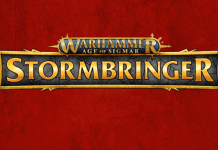
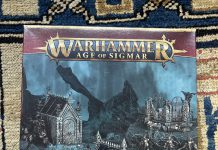
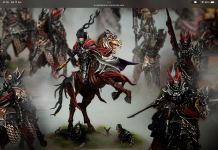
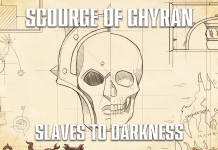
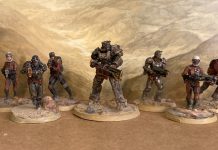
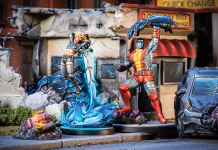


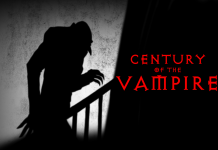
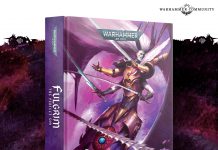
![[40k] Competitive Innovations in 10th: An Ominous Stench pt.2](https://d1w82usnq70pt2.cloudfront.net/wp-content/uploads/2020/01/Analysis_Banner.png)

